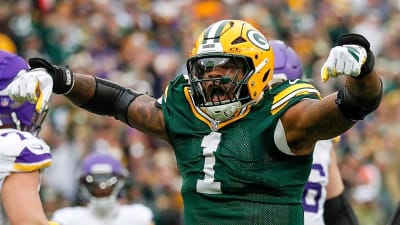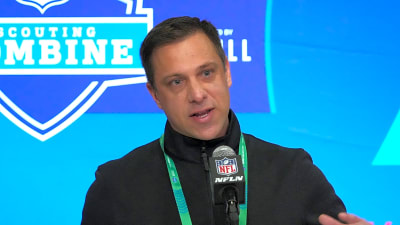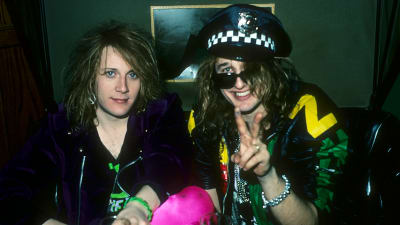An Irishman, two Englishmen, an Albanian, a Dutchman and six Scotsmen walk onto the park. It sounds like the start of a joke, but instead it is part of a notable piece of Celtic history…
30 years ago today (23 July 1995), those players gathered closely together. Their actions created a lasting symbol of the club, one that has been repeated on countless occasions since then. This was the start of the famous Celtic ‘Huddle’ – and this is the story of that moment, as well as its lasting importance…
It was 23 July 1995. The Bhoys were in Germany for a pre-season tour. Their opponents in this fixture were semi-professional side Emden Kickers. The game itself was utterly forgettable, with the Celts losing 2-0 to their hosts.
However, the significant moment of the day took place before the match had even started. As the teams prepared to kick off, captain Tony Mowbray called over the eleven Celtic players. In an action designed to boost team morale, they gathered closely together, each leaning on the other, and words of encouragement were uttered amongst the tight group.
Though no-one that day knew it, this Huddle would become a staple of the Celtic matchday experience, something in which players and fans would continue to participate.
The origin of sporting Huddles is unconnected to Celtic, Scotland or even association football. Instead, it is believed to have started in an American Football game, connected to challenges faced by deaf players.
Gallaudet University is located in Washington DC and caters to students that are deaf or visually-impaired. In the 1890s, one of their players – Paul Hubbard – noticed a problem. Hubbard worried that their opponents could read the sign language he was using to give instructions to his own team. Therefore, he came up with a solution.
His teammates would all gather in close together, ensuring that no-one could see the messages that were being shown to his team. And from here, the huddle was born.
It has since spread right around the world, known in various sports including football, basketball, cricket and many others. In fact, really any team event might make use of this tool.
The Huddle has been used sporadically at different points in Scottish football history, including by Celtic. In the 1940s, John Hogan used to encourage the team to do this, which caused certain problems.
Many of the players were very embarrassed to be so close to their teammates out on the pitch. Tommy Docherty – who later became a famous manager – explained that the team got around this by only doing it in the dressing room.
However, this was not something that the fans could see, nor that was done consistently. For that to happen, decades would have to pass and then a big Englishman would come to the Bhoys.
Tony Mowbray arrived at Celtic Park in 1991, having signed from Middlesbrough. A tough centre half, he faced difficult times on and off the park. In a footballing sense, Celtic were very poor in this era, failing to win any trophies and often finishing as low as fifth in the table. It was also a time that saw a takeover of the club by Fergus McCann. This began to change the Celts’ fortunes and in 1995 they celebrated winning the Scottish Cup.
However, Celtic’s sporting problems were irrelevant compared to other challenges in Mowbray’s life. Later in 1995, his wife Bernadette tragically died from breast cancer.
There have been various claims that it was the trauma of dealing with Bernadette’s illness that led to Mowbray introducing the Huddle, however both he and his teammates have repeatedly denied this. Mowbray himself once said that:
“I take a great sense of pride in it. It was nothing to do with my wife, as has been wrongly reported. It came out of adversity. The Celtic players needed to show real unity and togetherness. We needed to show the supporters we cared.”
Mowbray was a clear leader on the park, and he believed that the Huddle would help the Celts build on their Scottish Cup victory. This was not perhaps the case instantly, but it has certainly proven to be the case in the intervening years.
The sight of the Huddle is now an accepted part of Celtic’s pre-match build-up. This is not simply for the men’s first team, but it is used at all age levels and with the women’s team too.
The teams come on to the park, the players gather and they wait on the Celtic captain who has gone to speak to the referee, and the opposition captain.
When their leader returns, the players close in together and listen to words of encouragement and similar from different people. It has become a ‘code of the Huddle’ that players don’t reveal exactly what is being said when they are together.
And when this is all happening, shouts and cheers of backing emanate from the stands as the supporters try to make their own contribution, culminating in a giant roar when the players emerge from the Huddle.
There have been so many famous moments which have featured the Huddle. Arguably the most prominent of these was the 2003 UEFA Cup Final. The sight of the Celtic players gathered today in front of tens of thousands of fans is an iconic one.
In fact, so successful has been the Huddle that many Celtic players have continued the tradition even after leaving the club. For instance, Virgil van Dijk implemented the practice when he moved to Liverpool.
As a football club, Celtic have officially embraced the Huddle. Its prominence on different types of club merchandise such as posters, mugs and other paraphernalia is obvious evidence of this.
Part of the strength of the Huddle is the fact that it is not simply the players who can participate. Instead, it has become a custom and an action for fans too.
As well as cheering when it is happening, the chant of “Let’s all do the Huddle” has become commonplace in the aftermath of one on-field success or another. This leads to thousands of fans clustered together, embracing arms and shoulders with those around them.
This is similar to the fan action generally known as the Poznan, although in Celtic’s case it is always the club’s own Huddle that the fans are referencing.
In fact, at one point, the club even tried to get in the Guinness Book of Records for the world’s biggest huddle, although this is not something that has yet happened.
These fan huddles are not simply restricted to football grounds. At various times, small and large groups of supporters might take part in their own Huddle, often in the middle of a road, or prominent locations such as George Square.
This could be in Scotland, Ireland, or even much further afield in places like the USA, Canada, Australia and elsewhere.
Sometimes the important moments in life are not obvious until later.
As Celtic took to the field in July 1995 for a pre-season friendly, no-one could have known that this moment would become an indelible part of the Celtic story.
The eleven men who were in that first gathering were: Pat Bonner, Lee Martin, Tosh McKinlay, Malky Mackay, Tony Mowbray, Peter Grant, Brian McLaughlin, Rudi Vata, Pierre Van Hooijdonk, Andy Walker and John Collins.
Their actions in starting the Huddle will never be forgotten, especially the influence of Tony Mowbray. And since then, so many players and supporters have had the chance to emulate them and show their togetherness and backing.
So, all together now, “Let’s all do the Huddle, Let’s all do the Huddle…”
Matthew Marr
If you want to learn more about Celtic history, follow Hail Hail History on Twitter/X. You can also take part in a FREE Celtic history walking tour. Visit celticwalkingtours.wordpress.com for more information.
Matthew’s debut Celtic book titled ‘The Bould Bhoys – Glory to their name’ was published by Celtic Star Books last year and is available to order HERE. This brilliant book is also available on Amazon Kindle for just £3.49 and includes all photo sections that appear in the hardback edition.
More must-reads:
- AFCON 2025 storylines: Morocco’s rise, Mohamed Salah’s future and Nigeria’s redemption quest
- MLS divisional shift could spell trouble for two faltering franchises
- The 'Most multi-rushing-TD NFL games' quiz
Breaking News
Trending News
Customize Your Newsletter
 +
+
Get the latest news and rumors, customized to your favorite sports and teams. Emailed daily. Always free!








